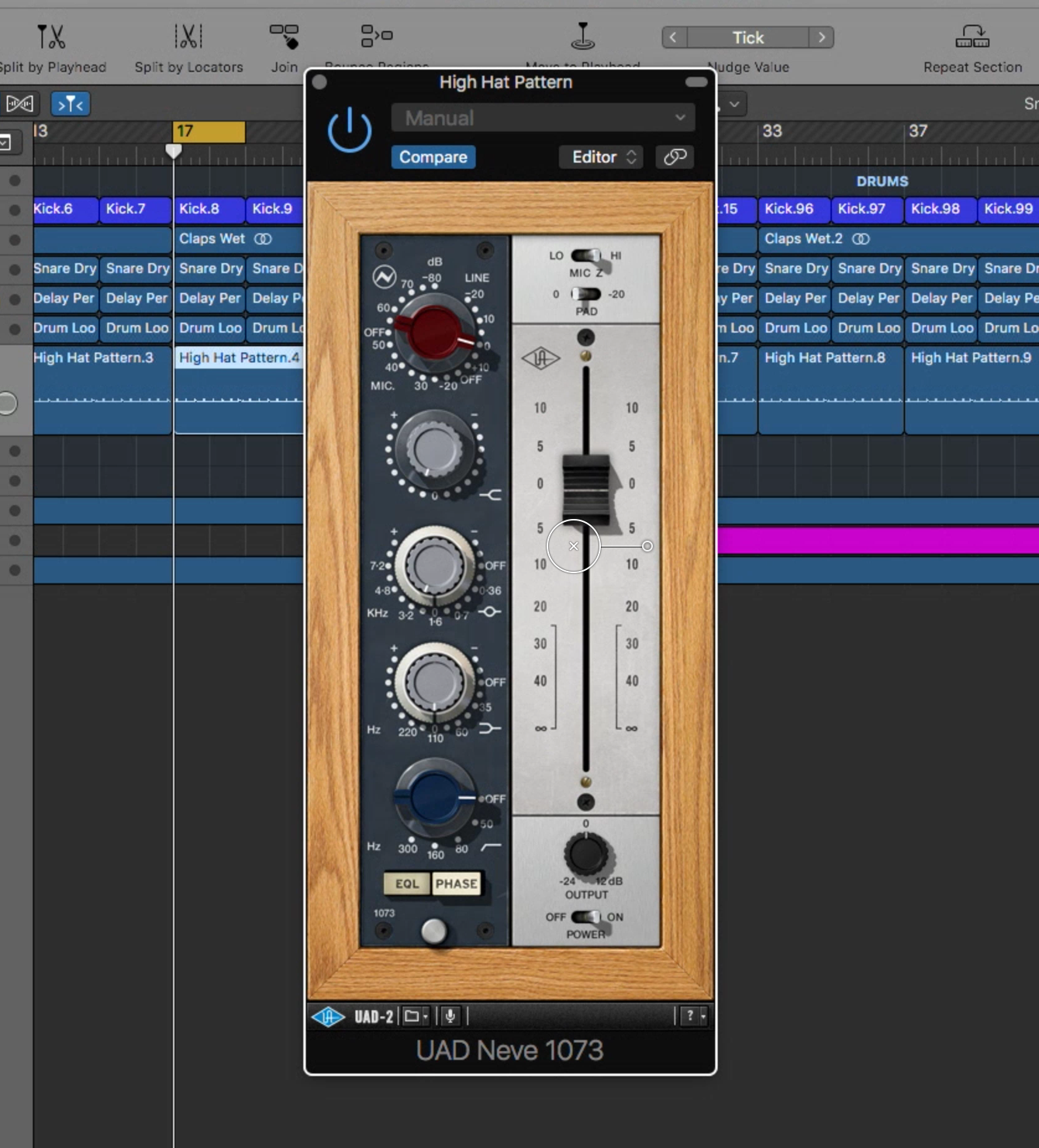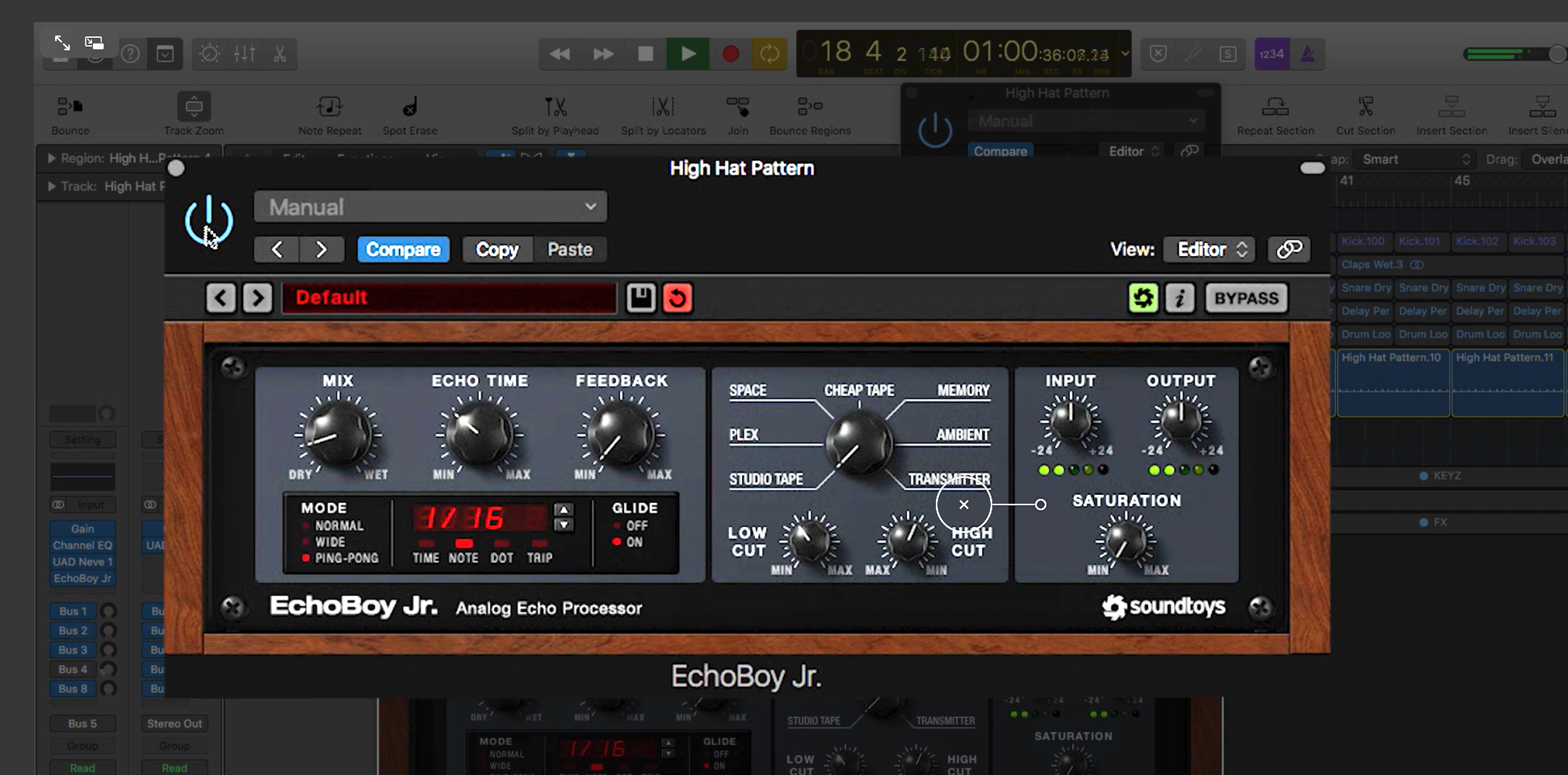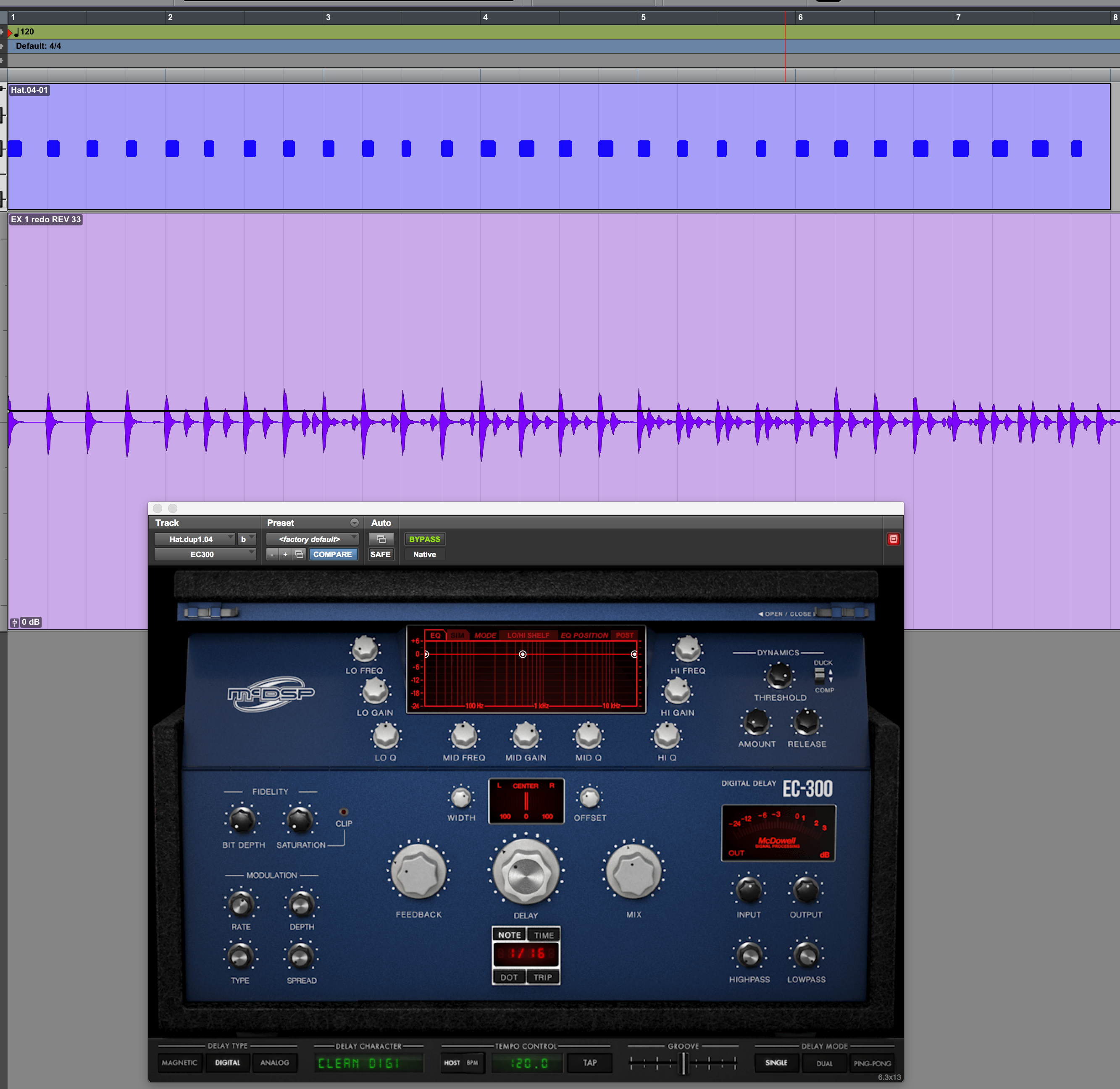In this excerpt from the video “Fred Everything Mixing ‘Believe,’” Fred talks about how he processed the hi-hat part for his remix of “Believe” by Kathy Diamond. He starts by playing two measures of the hi-hat part, which features hits on the upbeats followed by a sixteenth-note figure.
He says he first wants to add more high frequencies to the part. While he could have re-used the UAD Harrison 32C EQ from earlier in the mix, he decides instead on a UAD Neve 1073 plug-in. He mentions how you have to use it gingerly because you only need to move it a little bit to get noticeable results.
He wants to add a little high-end character to the hi-hat and does so by boosting in both the upper-midrange and high frequencies. He turns the high-shelf knob, which is boosting at 12kHz, up about one number on the dial (from 6:00 to a little past 7:00). He sets the mid-EQ knob to 1.6kHz and boosts it about the same amount. He plays it back without and then with the EQ, and you hear it get subtly brighter. “A touch of air,” is how he describes it.

Fred used the UAD Neve 1073 plug-in to add upper-mid and high frequencies to the hi-hat.
Next, he decides to process the hi-hat with delay to add some “reflection” to the part, by which he means to add a little rhythmic augmentation. For delay, he chooses Soundtoys EchoBoy Jr. and explains that one of the things he likes about it is its straightforward interface. He sets it for a sixteenth-note ping-pong delay using the Studio Tape emulation setting. When he plays it back with the effect engaged, not only does it create additional hits in the form of the echoes, but the ping-pong effect adds a stereo element to the previously mono hi-hat track.
Finally, he fattens up the hi-hat a little with a chorus effect. Interestingly, he adds it by way of an aux bus rather than inserting it on the hi-hat channel itself. That configuration allows him to feed other tracks to the aux track with the chorus if he wants.

Soundtoys Echoboy Jr. was Fred’s tool of choice for adding some subtle rhythmic complexity to the hi-hat.
Fred finishes up by explaining that because this is a remix, he’s purposely making the song a little different, and changing the hi-hat feel is one of the ways he’s doing it.
DELAY OF NOTE
Let’s expand on what Fred did with the hi-hat, and look at some other ways to use delay to alter a part rhythmically. Assuming your song is recorded to a click and therefore has a steady tempo, you can use the delay-time note-value settings on your delay plug-in to play around with some more complex rhythms.
All of these kinds of effects work better with everything quantized, so it’s easier with MIDI tracks. You can certainly use audio tracks, but if they’re human-played and unquantized, the results may be somewhat variable.
The rhythmic value that you set for the delay time, along with the feedback, can be used to control the type of rhythm you’re creating. Simple settings like quarter-note, eighth-note and sixteenth-note will be the most straightforward to use—although they’re often the most boring. Once you start with the dotted and triplet values, you can introduce syncopation.
The feedback parameter controls the number of repeats. Set all the way to zero, you get just one repeat, and if set at a low value you’ll just get a few. Turning it up above about 10:00 or 11:00 can change the rhythm as the taps from one note continue repeating into the next beat.
If you want parts to change over time, use your DAW’s automation to adjust parameters at specific times in the song.
One more thing to consider: if you’re using a delay that’s emulating a tape or analog unit, the repeats are going to be lower-fidelity than the original notes. This may create just the sound you’re looking for, but if you’re trying to integrate the repeats into the part, so that they sound like they were from the original track, you might be better off with a basic digital delay. It can create repeats that are exact tonal replicates of the original.
You can use delay to add interest and complexity to almost any source from hi-hats to percussion instruments to full drum loops to pianos to synths. Percussive or arpeggiated parts work best. Try setting your delay to its ping-pong option to get some really cool stereo effects (assuming you’ve instantiated a stereo or mono-to-stereo version of it, that is). Use automation liberally. There are endless creative possibilities.
FOR EXAMPLE
Here are some audio examples of using a delay to change a part’s rhythm.
Example 1: This example demonstrates some of the options for changing the rhythm of a part with a delay, even with a simple source track. Here, the source is a hi-hat playing quarter-notes. On bar one the McDSP EC-300 delay plug-in (set to Digital) is bypassed. Starting on bar two, the delay kicks in and there are automated changes in the delay-time note value in each measure for the rest of the example. Bar two features an eighth-note delay, bar three a dotted-eighth-note delay, bar four a triplet-eighth note delay, bar five a sixteenth-note delay, bar six a dotted-sixteenth-note delay; and bar seven a dotted-quarter note delay. The Mix and Feedback knobs are automated as well, and change from measure to measure, but stay mainly between 9:00 and 12:00.

This shows the original MIDI pattern from Example 1 on top, the bounced audio file in the middle and the delay, a McDSP EC-300, at the bottom. You can see from the waveforms that the rhythm is changing in every measure.
Example 2: The synth bass plays the same part for the whole example. For the first four measures there is no delay on it. In the second four, it has an eighth-note delay (Soundtoys EchoBoy Jr.) with the Mix at about 11:30 and the Feedback at its lowest setting.
Example 3: A trick guitarists sometimes use when soloing is to play a simple eighth-note pattern but run it through a delay set to a dotted eighth-note value. If you set the mix high enough so that the delayed notes are at the same or close to the same level as the original notes, it sounds like you’re playing a lot faster. This four-bar example repeats twice. A Waves H-Delay is inserted on the track but bypassed for the first time through the example. When it repeats, it’s got a dotted-eighth-note delay.